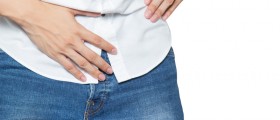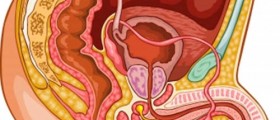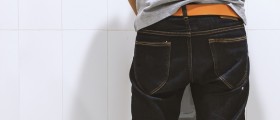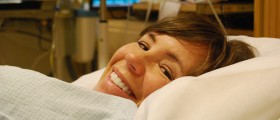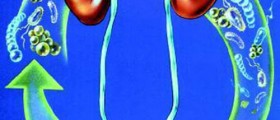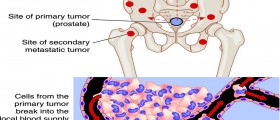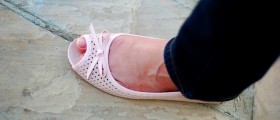I am having difficulty copying a Mayo Clinic article into the response.
mayoclinic.org/diseases-conditions/stress-incontinence/symptoms-causes/syc-20355727?p=1
“Stress incontinence occurs when the muscles and other tissues that support the bladder (pelvic floor muscles) and the muscles that regulate the release of urine (urinary sphincter) weaken.
The bladder expands as it fills with urine. Normally, valve-like muscles in the urethra — the short tube that carries urine out of your body — stay closed as the bladder expands, preventing urine leakage until you reach a bathroom. But when those muscles weaken, anything that exerts force on the abdominal and pelvic muscles — sneezing, bending over, lifting, laughing hard, for instance — can put pressure on your bladder and cause urine leakage.”
My outer sphincter should very strong since I started kegels about Dec. 20, 2017.
It is most likely a weakened bladder neck sphincter and a full bladder that leads to the SUI as well as one or more of the above activities. Another thing that can cause leaking is just getting up out a chair. Through pelvic floor exercises the outer sphincter may take over the function of the inner sphincter. One of my questions is does the bladder neck sphincter ever strengthen as opposed to regrowing to its original state.
My concern is the aging process. If the internal sphincter never regrows or strengthens then I am totally dependent on the external sphincter for continence. As the human body ages our muscles loose the strength. In addition statin drugs further sap muscle strength. I am 73 and on a statin. The combination of everything gives me cause for concern since the outer sphincter muscles are the only ones that keep me continent. I no longer have an inner sphincter that is fully functional.
Loading...
Just wondering if u have other references.
Loading...
At the current time, I have not had an episode of incontinence in three or four months. Before that, I had occasional leakage maybe once or twice a month for about a year. I go to the gym three times a week and lift a fair amount of weight for my size and weight (I am 5ft 4in, and weigh 140 pounds). I lift a 50 pound barbell over my head six times, 2 reps, I pull down 100 pounds on a machine ten times, 2 reps, etc. I have never had urinary leakage at the gym.
I find that if I can find a bathroom to urinate every 3 hours or so, I'm ok. And I never leak at night, although I do wake up and pee at least twice a night, perhaps I wake up due to other reasons than need to urinate? I do wear a pad when I anticipate being unable to get to a bathroom, for example when I give public talks lasting one to two hours, which I do a few times a year, but I have never wet the pad yet. I still find it psychologically reassuring to wear a pad in those circumstances.
The Holep is the only surgery I have ever had in my life. I do have somewhat elevated blood pressure and take meds to control it.
I tell you all this Buster, to give you hope that things will improve further for you over time.
Loading...
Loading...
By the way, 90cc is a rather large prostate , not medium.
Loading...
I guess I expected not to have to think about emptying my bladder on a schedule. Thanks for the report. Dr. Krambeck had told me that I would be continent in 6 months. I just think it should be over by now.
I am going without a pad at night. Depending on the night I can go for 3 to 5 hours. Like you I wake up for other reasons and take advantage to empty. Because I am still developing confidence I use a pad when I am in public situations; funerals, church etc.
Thanks for sharing your experience.
BTY are you from Indiana?
Loading...
Have a large medium lobe or large prostate and want to know how difficult is to operate on them? Have a question about the bladder neck, internal sphincter or a large medium lobe that protrude into the bladder and want to know how it looks?
Below is an video which may give usmore information.***this post is edited by moderator *** *** posting of web addresses is not allowed*** Please read our Terms of Use
Loading...
I am from southwest Virginia. Back in Dec.2016, I didn't know of many surgeons who did Holep. I chose Dr. Lingeman because he had an excellent reputation and had done thousands of Holeps. I certainly knew nothing about the details and variant procedures DL has been telling us about on this site. My urologist knew nothing about Holep (or maybe pretended not to know?) and wanted me to do Greenlight because it's what his clinic was doing, but Holep sounded better to me. As I've written before, I am happy with my results. It would have been nice not to have any incontinence and mine lasted perhaps longer than for many others, but at this time, after almost two years, it seems to be a very rare thing. The only other somewhat negative factor is my need to pee about every three hours during waking hours. I think younger men without enlarged prostates probably can hold out longer than I can. But then I am not a young man anymore. By the way, I have stopped going to my urologist as I don't see what he would do for me at this time.
Loading...
Below is an video which may give us more information
youtu.be/bo7xtpWVH-Y
Loading...
urology.jhu.edu/prostate/treatment_BPH.php
Scroll to the bottom titled open prostatectomy, slide 4 and 5. They show how the entire piece of eft, right and medium lobes are taken out . This is enucleation that is what holep uses.
Loading...
Found this good picture which clearly shows the internal sphincter. From this picture, it is easy to imagine how the bladder neck preservation works and to understand what Dr. Das meant by nicking a little at the internal sphincter in order to separate the adenoma.
google.com/search?rlz=1C9BKJA_enUS817&hl=en-US&ei=CNm4W_zaKumP5wKbkaxY&q=image+ureteral+orifice&oq=image+ureteral+orifice&gs_l=mobile-gws-wiz-serp.3..0i8i30.14840.20163..20757...0.0..0.292.1437.11j1j1......0....1.........0i71j35i304i39j0i8i7i30j0i7i5i30j0i7i30j0i13j0i13i10j0i67j0i7i10i30.BwoaeOsIvQc#imgdii=dP0ZrhuIjvD5KM:&imgrc=AAzEG1xd-91ilM:
Loading...
One more picture showing the location of both the internal and external sphincters.
medicalimages.com/stock-photo-anterior-view-and-sagittal-view-of-male-urinary-bladder-image22468110.html
Loading...
what is the diameter of the scope 22-FR that inserts into prostate to do HoLEP? "22" at first I thought must have meant 22mm, which is big! I am glad that I was so wrong.
From websurg.com/exports/winners/pdf/WeBSurg_Winners_42_1.pdf:
"1.7 Resectoscopes
There are essentially two types of resectoscopes (Fig. 1.22), which differ in outer diameter: 7.3 mm (22 Fr) and 8.7 mm (26 Fr).
.......
The resectoscope consists of a classic endoscope, with diameters ranging between 2.9 mm and 4 mm – preferably with a 12 degree viewing angle to keep the electrode within the field of view – combined with a cutting loop operated by a passive spring mechanism, and two sheaths for continuous irrigation and suction of the distension medium. Apart from the cutting loop, other instruments such as microknives and a variety of vaporizing or coagulating electrodes can be used with the working element of the resectoscope (Fig. 1.25). ....
(Below are electrodes used by TURP. HoLEP uses an optical fiber instead of metal electrodes.)
Resectoscopes can be employed either in unipolar or bipolar technique. It is important to underline that the same resectoscope can be used both as unipolar and bipolar instrument, simply by changing the working element and the electrodes. Therefore, in order to switch from unipolar to bipolar resection technique with a suitable current generator, the same resectoscope (endoscope and sheath) can be used, requiring only the working element and the electrodes to be changed. The benefits of bipolar energy compared to unipolar are described in the relevant chapter.
For distension and irrigation of the uterine cavity a 1.5% glycine solution or sorbitol- mannitol is used for unipolar surgery. For bipolar resectoscopy, physiological saline solution must be used as distension medium.
1.8 Electrosurgical Unit for High-Frequency Surgery
The resectoscope is connected to an HF electrosurgical unit with automatic power supply control and alarm function (Fig. 1.26). Modern HF systems can be operated both in unipolar and bipolar mode, for hysteroscopy as well as for laparoscopy and open surgery. Resectoscopy can be performed with unipolar or bipolar current depending on the available system. In the unipolar system, the electrons flow from the high-frequency electrosurgical unit to the active electrode (e.g. cutting loop or knife electrode) before passing through the tissue to the neutral electrode and then returning to the electrosurgical unit. Broadly speaking, electrosurgery involves the potential risk of burns, because part of the electrons’ path is unknown. In theory, electrical burns can occur, even at some distance from the active electrode. However, state-of-the-art equipment considerably reduces this risk if correct placement and good contact and/or adequate support surface of the neutral electrode in relation to the energy from the HF electrosurgical unit is respected.
In the bipolar system, the HF generator produces an initial peak of around 400 RMSV (Root Mean Square Voltage) which creates an electrical arc between the two bipolar electrodes. Once the electrode is sufficiently close to the tissue, the electrical arc converts the conductive solution of sodium chloride to a plasma containing sodium particles that are active because they are highly charged with energy. Once this plasma effect has been created, it can be maintained with a lower voltage (100–350 RMSV). Contact with the activated sodium ions (and thus not with the electrode) provokes disintegration of the tissue due to breaking of the carbon-carbon and carbon-hydrogen bonds and dissociation of the water molecules to H+ and OH ions. The result is collapse of the cellular membranes with ensuing cutting of the tissue."
From the above description of how TURP works, we can get an idea why HoLEP is better.
Loading...



